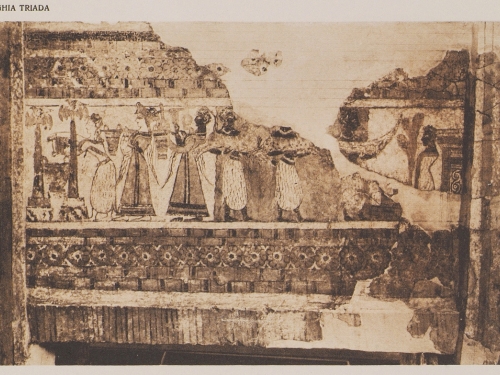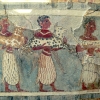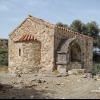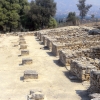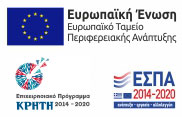Agia Triada
A very important archeological site of central Crete, near Phaistos, on the banks of river Geropotamos, with special natural beauty is Agia Triada. The royal villa or small Minoan palace of Agia Triada, as it was named by the Italian archeologists that brought it to light in the beginning of the previous century, was built in around 1600 B.C. on a hill and it is one of the most important monuments of Minoan architecture, rich in finds.
It is located 64 km southwest of Heraklion, in the route Heraklion – Agia Varvara – Agioi Deka – Moires – Phaistos – Agia Triada and 3 km south of Phaistos. It is believed that it was used as the summer quarters of the king of Phaistos, while other researchers believed that it wa used by the king of Phaistos after the destruction of the palace, but maybe both the palace and the village were used at the same period of time.
The Royal Villa was built in the 16th century B.C. (Late Minoan IA). After the destruction of the palaces (1450 B.C.) a “megaron” of Mycenean style was built on the northern side of the villa.In the Geometric times (8th century B.C.) the Villa was a worship place. A sanctuary dedicated to Zeus was built in the Hellenistic times (4the-1st century B.C.). During the Venetian rule the church of St George Galatas was built in the yard of the Villa (14th century A.D.).
The building complex of Agia Triada is considered to be a mansion or a small palace, like the small palace of Knossos. It consists of two wings forming an L-shape and, although it does not have the dimensions of the palaces of Phaistos and Knossos, it has all the features of palatial architecture. It has “multiple doors”, appartments with lightwells, sanctuary rooms, storerooms, treasuries, laboratories, staircases, stoas, yards, aisles and stone paved roads and yards. The complex is very gracefully and impressively decorated. The walls were covered with stone plats and decorated with frescoes, the number of which is larger than that of the entire Minoan Crete. A series of staircases lead to the first floor.
The southern part, which was very simple, a series of rooms faces a long narrow corridor. They were possibly used as auxiliary rooms. In one of them the famous sacramental stone cup was found. In the westeastern part the appartment of the king were located. The floors were covered with red mortar. The central chamber is linked, through two multiple-doors, with a yard with was surround with columns and there was also a lightwell in the north. There is also a room with desks and a smaller one with an alabaster leg that may have been used as a bed. In the northeast of the multiple-door archives were found with a large number of clay seals. Next there is a room with wallpaintings depicting lilies and wild cats. In a nearby room 9 copper coins were found and this is why the room was named a treasury.
On the western facade the remains of a road with steps have been preserved, that has been named by the excavators “the stairs of the sea”. In the northern wing there is a set of storerooms with huge pots. One of the storerooms has
a central pillar and in the east a narrow and long official chamber opens, with a multiple-door and a lightwell. Behind it there is stoa with five pillars and northeast of it extends the agora of the archaic times. On its eastern side there was a series of pillars and columns and in front of the eight rooms with large clay pots. East of the storerooms there were luxurious appartments with multiple-doors and lightwells as well as sacred worship rooms with a desk. After the destruction of the villa, the sanctuaries extended over the ruins of the rest of the rooms. Among the buildings of the Mycenean rule, a mycenean megaron of three parts is the most distinctive one.
In the villa of Agia Triada were found, apart from excellent samples of ceramic art, an important archive of Linear B plates, sample of stone art, three stone vessels with carved representations, the sacramental cup, the rhyte of the wrestlers and the vessel of the reapers.
One of the most special finds that were discovered in Agia Triada, is a clay statuette of a Minoan goddess in a swing. In a storeroom nine copper coins were also discovered and a treasure of seals. However, the most important and interesting find, is the sarcophagus of Agia Triada.The Italian School of Archeology spotted and excavated the site of Agia Triada in the years 1902, 1903, 1904-1905 and 1910-1914.





